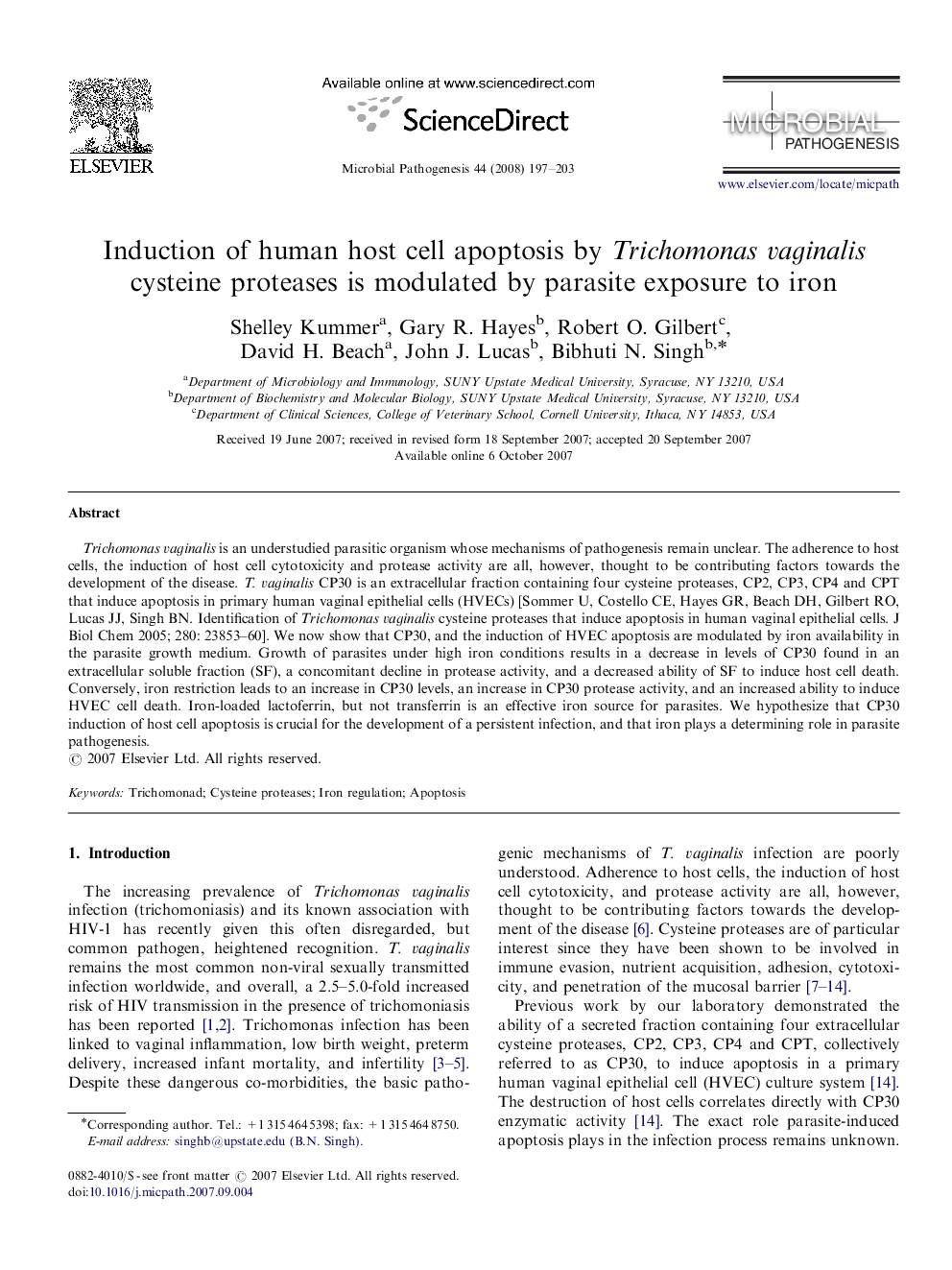| Article ID | Journal | Published Year | Pages | File Type |
|---|---|---|---|---|
| 3417156 | Microbial Pathogenesis | 2008 | 7 Pages |
Trichomonas vaginalis is an understudied parasitic organism whose mechanisms of pathogenesis remain unclear. The adherence to host cells, the induction of host cell cytotoxicity and protease activity are all, however, thought to be contributing factors towards the development of the disease. T. vaginalis CP30 is an extracellular fraction containing four cysteine proteases, CP2, CP3, CP4 and CPT that induce apoptosis in primary human vaginal epithelial cells (HVECs) [Sommer U, Costello CE, Hayes GR, Beach DH, Gilbert RO, Lucas JJ, Singh BN. Identification of Trichomonas vaginalis cysteine proteases that induce apoptosis in human vaginal epithelial cells. J Biol Chem 2005; 280: 23853–60]. We now show that CP30, and the induction of HVEC apoptosis are modulated by iron availability in the parasite growth medium. Growth of parasites under high iron conditions results in a decrease in levels of CP30 found in an extracellular soluble fraction (SF), a concomitant decline in protease activity, and a decreased ability of SF to induce host cell death. Conversely, iron restriction leads to an increase in CP30 levels, an increase in CP30 protease activity, and an increased ability to induce HVEC cell death. Iron-loaded lactoferrin, but not transferrin is an effective iron source for parasites. We hypothesize that CP30 induction of host cell apoptosis is crucial for the development of a persistent infection, and that iron plays a determining role in parasite pathogenesis.
